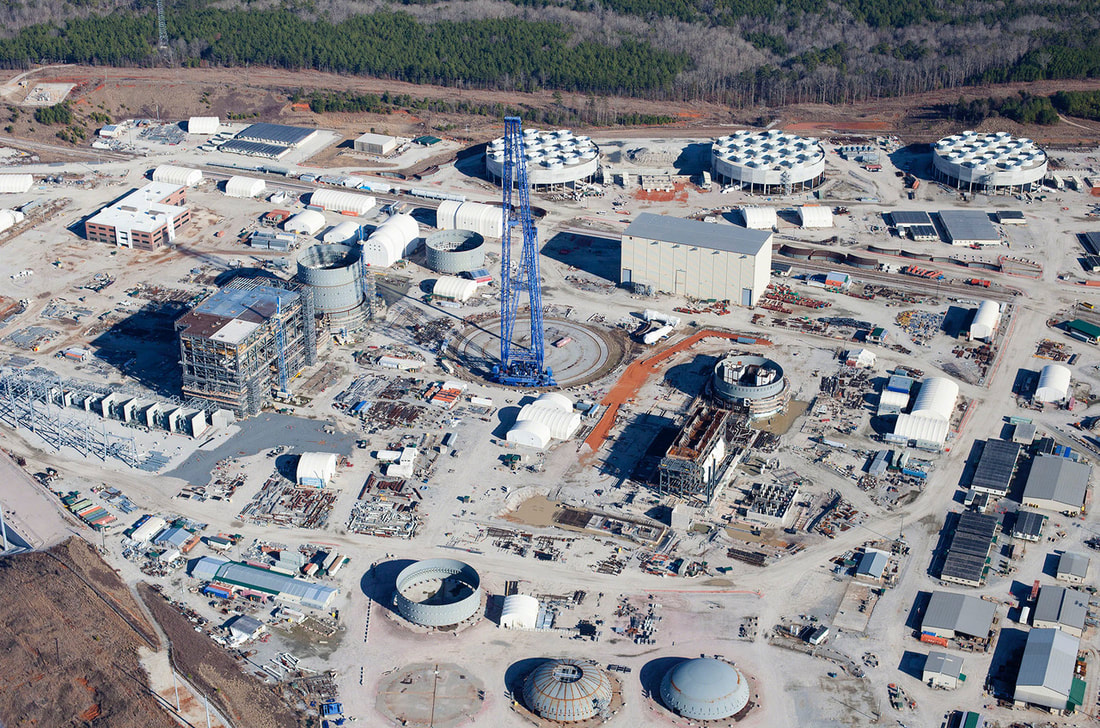 South Carolina Public Service Commission Spanks South Carolina Electric & Gas and Dominion- Request for “Expedited Hearing” in VC Summer Nuclear Debacle is Denied
South Carolina Public Service Commission Spanks South Carolina Electric & Gas and Dominion- Request for “Expedited Hearing” in VC Summer Nuclear Debacle is Denied
On January 31, 2018, the PSC denied the SCE&G/Dominion request for a fast-track hearing in the nuclear fiasco and ruled that the schedule should be closer to what Friends of the Earth/Sierra Club requested. This means that more time will be given for “discovery” and that a big hearing with all issues consolidated will occur around July 30. Staff will now set the schedule so stay tuned for that in the coming days.
see PSC Order 2018-80 linked here
Photo: Stay tuned for a new photo drop of SCE&G’s VC Summer abandoned and forlorn nuclear scrapyard, such as this January 31, 2018 photo,
©High Flyer—–

More on “NNSA Pit Production Alternatives Study,” January 19, 2018 – posted by the Defense Nuclear Facilities Safety Board (DNFSB)
Presentation, which looks at the Savannah River Site for an expanded nuclear weapons role – via manufacture of plutonium components for nuclear weapons – is linked here
—–
“Playing for pits”
Albuquerque (New Mexioc) Journal, January 26, 2018
photo: MOX plant under construction at SRS, September 18, 2017, by High Flyer.
Note: Photos of the MOX debacle, from December 19, 2017 are available – contact SRS Watch for information, srswatch@gmail.com
—–
Is SRS ready to respond to a nuclear criticality event at the aging H-Canyon reprocessing plant, when processing plutonium or highly radioactive spent fuel? Along with a major leak or explosion of a high-level radioactive waste tank, this is the main accident we fear at SRS.
See Defense Nuclear Facilities Safety Board (DNFSB) weekly report of December 15, 2017, posted on January 18, 2018:
“Emergency Preparedness (EP): The resident inspectors observed the H-Canyon/HB-Line annual EP exercise. The scenario simulated three HB-Line workers causing a nuclear criticality while handling 3013 containers and one of these workers getting injured during their evacuation. While SRNS conducts annual criticality evacuation drills, this was the first one in memory involving the overall response to a criticality event. Accountability was slower than usual since it involved all the day workers versus just a shift crew and there was confusion over which workers were exempted from the exercise. The identification of the missing injured worker was also slow. (Better selection and coaching of the two victims who reported to the rally point might have improved the timeliness of this). Furthermore, weak command and control resulted in a lack of coordination in the search for the missing victim. Three efforts occurred in parallel. First, the H-Canyon shift operations manager (acting as Area Emergency Coordinator) was having a team from the Operations Support Center prepared. Second, the HB-Line SOM directed the Incident Scene Coordinator to form a team. Meanwhile, after being told of the missing person by a Radiological Protection Department employee, the Fire Department dispatched two emergency medical technicians, who actually found the missing victim.”
Thanks to DNFSB staff at SRS for monitoring safety-related activities at the site! (See DNFSB website: https://www.dnfsb.gov)
—-
The lack of need for new plutonium “pits” for nuclear weapons should result in no new pit facility at SRS or Los Alamos
Debate over ‘pits’ at LANL may be getting real
Albuquerque Journal, January 12, 2018
When the MOX plant construction is finally halted – the project continues to drag along at low efficiency and with many remaining historical “rework” problems – it could be converted to a waste management center or a nuclear non-proliferation training center. All ideas about reuse of the MOX plant are welcome: srswatch@gmail.com
—–
Defense Nuclear Facilities Safety Board, posted January 4, 2018, on problems in operations at SRS:
Conduct of Operations Safety Management Program at the Savannah River Site
EXECUTIVE SUMMARY
Members of the Defense Nuclear Facilities Safety Board’s (Board) staff and the Department of Energy (DOE) have identified safety issues with the Conduct of Operations (ConOps) safety management program at Savannah River Site (SRS). The staff identified these safety issues at facilities operated by both Savannah River Nuclear Solution and Savannah River Remediation. These safety issues challenge the ability of operations personnel to operate SRS’s defense nuclear facilities in compliance with their safety bases. They also demonstrate the need for improvements in the SRS contractors’ corrective action programs to ensure timely and effective resolution of operational issues.
1) Less than adequate rigor of TSR control implementation.
2) Less than adequate operations training on TSR controls and their bases.
3) Less than adequate work authorization processes in implementing TSR controls.
4) Ineffective corrective action program.
DNFSB report linked here: https://www.dnfsb.gov/sites/default/files/document/13941/Conduct%20of%20Operations%20Program%20at%20the%20Savannah%20River%20Site.pdf
DNFSB letter to DOE posted as cover to report.
—–
Friends of the Earth/Sierra Club Statement on Dominion Takeover of SCANA – January 3, 2017
A Bad Deal for Clean Energy in South Carolina and for SCE&G Ratepayers, who get Stuck Paying for the V.C. Summer Nuclear Reactor Debacle for 20 Years
news release posted here:
https://foe.org/news/statement-dominion-takeover-scana/
—–
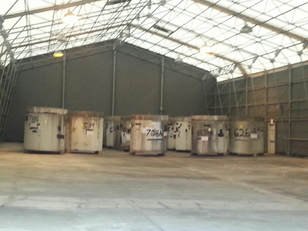
downblended surplus plutonium is counted could impact the number of SRS containers allowed to be disposed of in the Waste Isolation Pilot Plant in New Mexico. Changing the way container volume has been historically counted will likely be opposed by public interest groups in New Mexico.
Air counted as waste? WIPP to adjust tracking of emplacement volumes
Carlsbad (New Mexico) Current-Argus, December 15, 2017
photo: culverts in E-Area at SRS, containing drums holding “Pipe Overpack Containers” containing downblended plutonium (about 150 grams in each POC), before shipment to WIPP, March 25, 2015
see RCRA Proposed Permit Modifications (Drafts), December 15, 2017:Draft Class 2 Permit Modification Request Clarification of TRU Mixed Waste Disposal Volume Reporting dated December 15, 2017
see page 2: “The Permittees are proposing this modification to the Permit to clarify how the Permittees calculate final TRU mixed waste volumes for the purposes of reporting these volumes against the maximum hazardous waste disposal unit (HWDU) capacities prescribed by Permit Part 4, Table 4.1.1, Underground HWDUs. This modification also proposes to distinguish between the TRU mixed waste volume tracked and reported in Table 4.1.1 in accordance with Permit Part 6, Section 6.10.1., Panel Closure, pursuant to the Resource Conservation and Recovery Act (RCRA) through the Permit and the TRU waste volume of record tracked and reported separately by the DOE pursuant to the WIPP Land Withdrawal Act (LWA). In this regard, this modification clarifies that the maximum permitted capacity of the WIPP repository is based on the maximum permitted TRU mixed waste capacities of the individual HWDUs rather than the LWA TRU waste capacity limit of 6.2 million cubic feet (ft3) authorized by Congress in the WIPP LWA of 1992 (Public Law 102-579 as amended by Public Law 104-201).” etc.
——

See the December 2017 issue of the Transitions newsletter, page 2, for “Volunteer highlight”:
https://drive.google.com/open?id=1IFO5z2jz1NFt5gjnD_hW-cPmQ0PeWSiA
—–
–
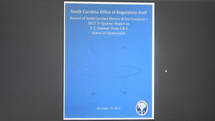
12-19-17 ORS’ Review of SCE&G’s Q3 VC Summer Report
report linked here:
—–
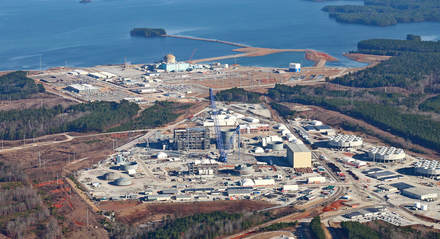
New Aerial Photos of VC Summer Nuclear Scrapyard Released; Photos Confirm Site Abandonment; More Cranes Removed; No Sign of Work Activity to Protect Structures, Degradation Continues – news of December 22, 2017 – linked here
Aerial Photos of SCE&G/Santee Cooper VC Summer Nuclear Chaos Linked Here, Dec. 19 – Will be Used in Dockets before SC PSC as Project Owners are Not Providing Photos to the Public
Victory for the Public! Friends of the Earth/Sierra Club Compliant seeking Review of Past Prudency Decisions (Cost Overruns) and Alternative Energy Allowed to Move Forward by SC PSC on Dec. 20 – Order Linked Here
Columbia, SC – New aerial photos of the V.C. Summer nuclear construction project confirm that no activity is taking place at the nuclear reactor construction site and no visible efforts are being made to protect structures or reactor components.
full news release, with links to December 19, 2017 and October 4, 2017 photos linked here
photo credit: ©High Flyer – see photo link for “read me first” message from High Flyer, about how to credit the photos
—–
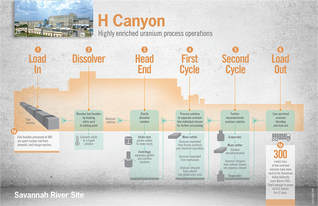
The aging H-Canyon reprocessing plant is still reprocessing research reactor spent fuel that is removed from storage in the L-Basin (pool in long-closed production reactor). Has the main mission of the facility become jobs and a lucrative contract for Savannah River Nuclear Solutions?
The public and the Savannah River Site Citizens Advisory Board (SRS CAB) should keep a close eye on the status of the H-Canyon, now 62-years old. (See DOE news release on the 60th anniversary of the facility.)
For a glimpse of the H-Canyon exhaust tunnel issues, see DEFENSE NUCLEAR FACILITIES SAFETY BOARD weekly report for
December 1, 2017
H-Canyon Exhaust (HCAEX) Tunnel: DOE-SR approved the justification for continued operations for H-Canyon while the ability of the HCAEX Tunnel to perform its safety class safety function is indeterminate (see 10/27/17 and 6/30/17 reports).
DNFSB weekly report linked here
DNFSB website, with links to weekly SRS reports
Additionally, the same DNFSB weekly report (and earlier ones) highlights problems with cleaning out plutonium solutions from H-Canyon, as part of termination of plutonium oxide production for eventual disposal.
—–
Friends of the Earth news, December 18, 2017 – linked here
S.C. Public Service Commission to Decide on December 20 on Challenge to Friends of the Earth/Sierra Club Complaint in Nuclear Reactor Construction Fiasco in South Carolina & Rule on ORS Rate-Relief Docket
PSC to likely Rule Against South Carolina Electric & Gas’ “Motion to Dismiss” Effort to Recover Money Wasted on Nuclear Reactor Debacle
Columbia, SC – The South Carolina Public Service Commission (PSC) is set to rule on an attempt by South Carolina Electric and Gas to block a complaint by Friends of the Earth and the Sierra Club that seeks to recover ratepayer money wasted on the terminated VC Summer nuclear reactor construction debacle.
—–
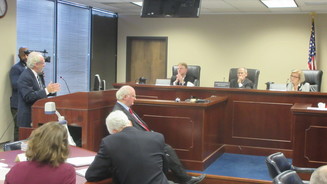
The State, Columbia, South Carolina, December 13, 2017
photo: Lawyer Bob Guild, at podium on left, argues on December 13, 2017 on behalf of Friends of the Earth/Sierra Club, before the South Carolina Public Service Commission against SCE&G’s “motion to dismiss” complaint by the groups – to review past “prudency” of decision allowing massive cost overruns for VC Summer nuclear reactor construction debacle & to direct SCE&G to pursue alternative energy
—–
South Carolina Public Service Commission to Hear SCE&G’s “Motion to Dismiss” Friends of the Earth/Sierra Club Complaint on VC Summer Nuclear Debacle, 10:30 a.m. on Wednesday, December 13 at PSC in Columbia, SC
Complaint, filed on June 22, Seeks to Review Past “Prudency” of Decisions Allowing Massive Cost Overruns, Reclaim Ratepayer Money & Require Conservation and Alternative Energy
See Agenda for December 13 Hearing in Notes in News Release
—–
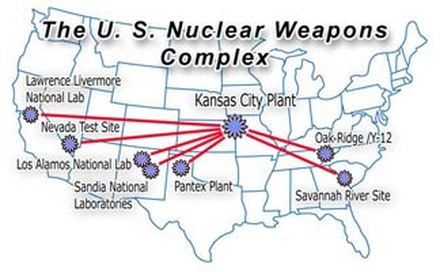
SRS Watch in article on the possibility plutonium “pit” production at SRS, for nuclear weapons:
Trump Prepares for Nuclear Weapons Production
Environment News Service, December 8, 2017
image credit: Nuclear Watch of New Mexico, https://nukewatch.org/, a fellow member of the Alliance for Nuclear Accountability (coalition public interest groups near DOE sites), with a focus on nuclear weapons and waste activities at the Los Alamos National Lab in New Mexico
—–
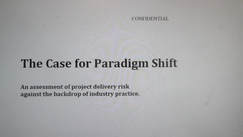
“Post and Courier releases internal Westinghouse report detailing early faults with nuclear projects”
Charleston Post & Courier, Dec. 8, 2017 – article linked here
We obtained the mentioned Westinghouse a month ago and expected the Post & Courier to write about it, which they have now done.
Charleston Post & Courier, Dec. 8, 2017
“The Post and Courier today released a confidential report that warned six years ago that Westinghouse Electric wasn’t prepared to build four new nuclear reactors in Georgia and South Carolina.”
Westinghouse confidential report, obtained by SRS Watch, on November 3, 2017 – linked here